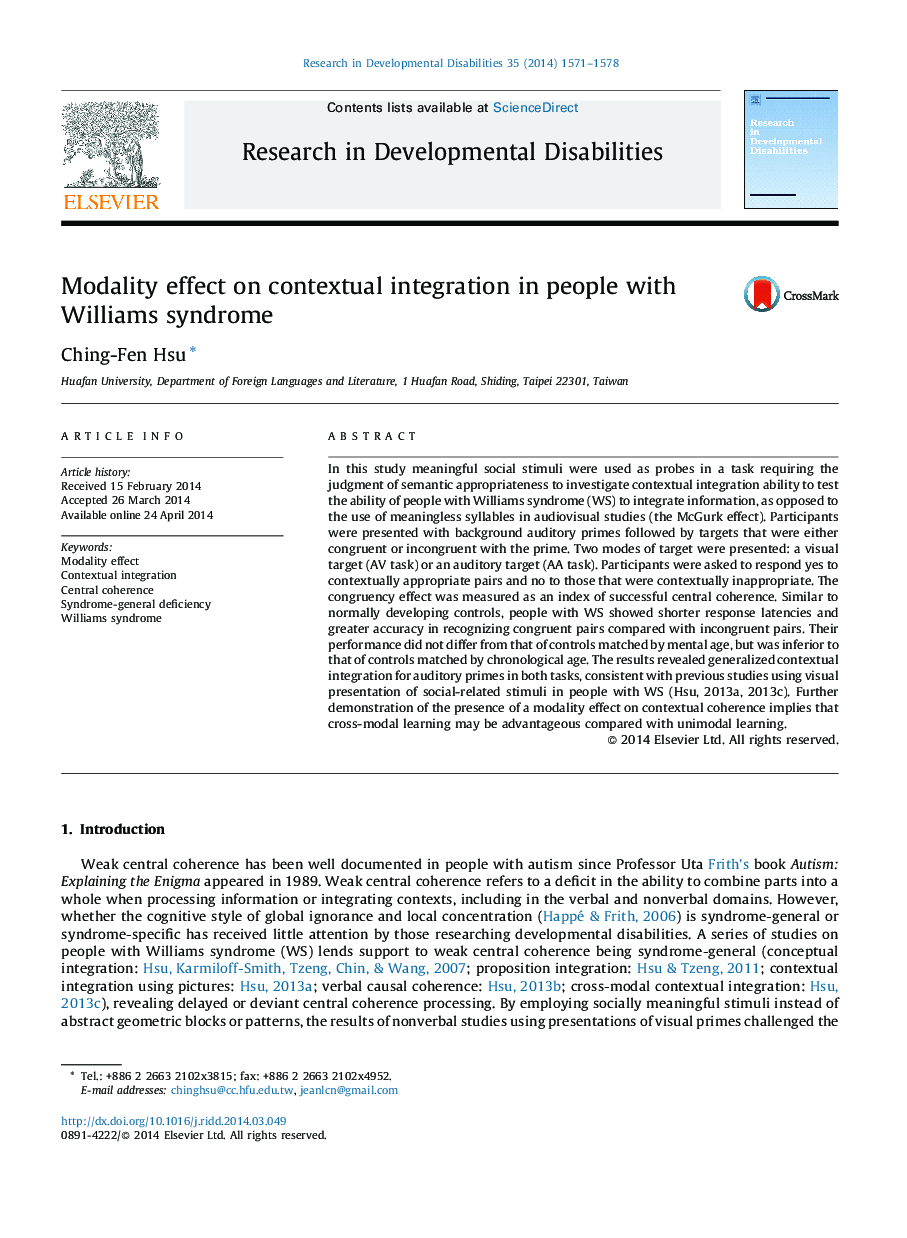| Article ID | Journal | Published Year | Pages | File Type |
|---|---|---|---|---|
| 10317233 | Research in Developmental Disabilities | 2014 | 8 Pages |
Abstract
In this study meaningful social stimuli were used as probes in a task requiring the judgment of semantic appropriateness to investigate contextual integration ability to test the ability of people with Williams syndrome (WS) to integrate information, as opposed to the use of meaningless syllables in audiovisual studies (the McGurk effect). Participants were presented with background auditory primes followed by targets that were either congruent or incongruent with the prime. Two modes of target were presented: a visual target (AV task) or an auditory target (AA task). Participants were asked to respond yes to contextually appropriate pairs and no to those that were contextually inappropriate. The congruency effect was measured as an index of successful central coherence. Similar to normally developing controls, people with WS showed shorter response latencies and greater accuracy in recognizing congruent pairs compared with incongruent pairs. Their performance did not differ from that of controls matched by mental age, but was inferior to that of controls matched by chronological age. The results revealed generalized contextual integration for auditory primes in both tasks, consistent with previous studies using visual presentation of social-related stimuli in people with WS (Hsu, 2013a, 2013c). Further demonstration of the presence of a modality effect on contextual coherence implies that cross-modal learning may be advantageous compared with unimodal learning.
Related Topics
Life Sciences
Neuroscience
Behavioral Neuroscience
Authors
Ching-Fen Hsu,
